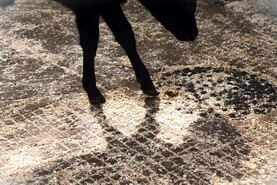Calf numbers at marts rose by 12% over the last week, according to the Irish Cattle Breeding Federation (ICBF) calf price database.
Traditional beef breeds made up 60% of all calves traded over the last week and the gap between Angus and Friesian bull calves widened, with Friesians accounting for 25% of calves and Angus at 37%.
Most of those increases in traditional beef-cross calves have taken place for calves aged between three and six weeks of age and was more pronounced for Herefords.
Older Hereford heifer numbers increased by 61% and bull calves by 35% compared with last week. This surge resulted in prices for both falling by €25/head to €186/head for bull calves and €106 for heifers.
That supply reduction for Friesians, along with the Dutch market kicking into gear, has played a part in the stabilisation of prices for Friesian bull calves compared with earlier this month.
Over the last seven days, calves aged between 10 and 20 days of age sold for €40/head, a reduction of €5/head. Friesian bulls from 21 to 42 days of age were back €2/head to €53.
In terms of continental calves, Belgian Blues were the most numerous, making up 6% of all calves traded.
Prices for younger calves were up by almost €20/head, with bull calves under three weeks old making €193 and heifers of the same age selling for €177/head.
Mart managers have regularly mentioned that numbers were slower to show at marts this spring and this is played out in the figures from the database.
Compared with the end of March 2023, numbers are up by almost 1,500 calves. Prices in that time have remained relatively stable for all the main breeds of calves on offer.
Younger Friesian bull calves are back €3/head and older Friesian bulls are up €1/head on this time last year.
There are similar small margins between the ages and sexes for both Angus and Hereford calves under six weeks of age, which is up €6/head compared with this time a year ago.






 This is a subscriber-only article
This is a subscriber-only article










SHARING OPTIONS: